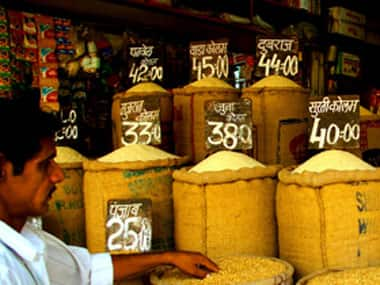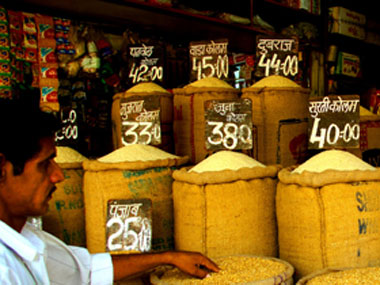Sonia Gandhi’s National Advisory Council (NAC) wants to bring in a Food Security Act which will entitle 75% of the population to subsidised grain. Here’s the bad news: most of it will be money down the drain.
Reason: Very little of the grain earmarked for the poor actually reaches them. And we can’t blame it on the rats. Grain meant for the poor is being sold to the not-so-poor or black marketed elsewhere.
A recent World Bank report cites horrendous figures of 91% grain leakage from Bihar’s public distribution system (PDS). Maybe it should be called the private distribution system, for just 9% reaches the poor.
This is a particularly depressing figure in the light of the fact that the state also has the highest proportion of poverty. Over 54% of Bihar’s population lives below the poverty line.
And this is not all. Another populous and poor state, with almost 41% of its population labelled as BPL, is Uttar Pradesh. Two out of every three sacks of grain sent there disappears down a black hole - for a leakage rate of 67.5%.
Currently, families below the official poverty line get 35 kg of grain through the public distribution system at very cheap rates - Rs 4.15 per kg of wheat and Rs 5.65 per kg of rice.
NAC not only wants the number of beneficiaries more than doubled, but also that the grain be sold cheaper at Rs 2 a kg for wheat and Rs 3 a kg for rice.
Another question that arises is this: Are states poor because they are badly governed or is it the other way round? Do the richer states do any better when it comes to feeding their poor?
Well, not quite. Even the relatively richer states perform no better on the grain leakage front when it comes to BPL families. Punjab and Haryana, for instance, with better-than-average performance on BPL populations, also have some of the highest grain leakages. A silver lining: states like Orissa and Rajasthan, which are also very poor, do have better PDS management.
[caption id=“attachment_18897” align=“alignleft” width=“380” caption=“NAC not only wants the number of beneficiaries more than doubled, but also that the grain be sold cheaper.Photo by Prasad Kholkutu/ Reuters”]
 [/caption]
[/caption]
That said, even the lowest grain leakage is a disappointing figure of 27 % (in West Bengal). This is indicative of the extent of the problem. It is compounded by the fact that leakage is present across the country and not restricted to specific states or regions.
Why is this happening?
The World Bank has a few explanations. One, above poverty line (APL) households capture a share of the PDS grain benefits. As much as 21.5% of the grains meant for BPL households actually accrues to APL folks.
This situation is, strangely enough, most prevalent in the relatively better off states like Andhra Pradesh and Tamil Nadu. The remaining leakage, which is at 36.4% of grains intended for BPL households, is explained by diversions. That is, it is misappropriated and sold in the black market.
Maybe, there is some method to the NAC’s madness. The Council’s idea is that even some APL cases should be entitled to subsidised grain. Here’s the good news. They may already be getting it.
)